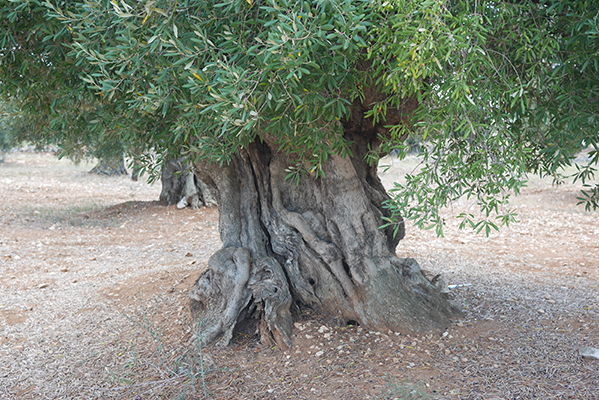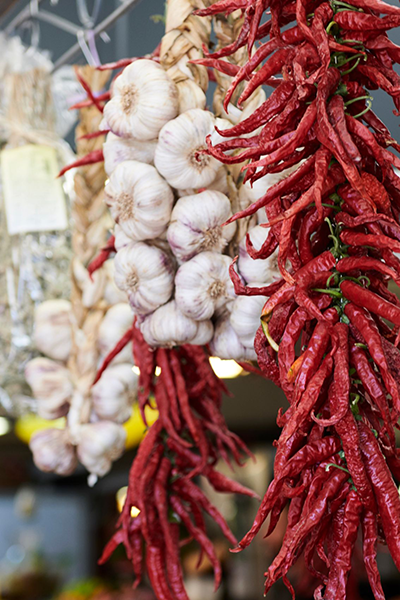Nudo's annual choice for the Monovarietal oil is always the topic of hot debate with our miller Corrado Corradini as it is our golden opportunity to showcase oils which are largely unknown outside of their region of origin due to the small production available.
Selecting Peranzana olives for this year's Monovarietal oil, Corrado was lucky to find a sufficient harvest available from one producer as this cultivar is only grown in the tiny region of Torremaggiore, 169 metres (554 ft) above sea level in the province of Foggia, Puglia in the Southeast of Italy.
The groves can be found on a small plain between the towns of San Paolo di Civitate, Torremaggiore and San Severo in the Alto Tavoliere. Formed over centuries on top of a pre-historic seabed, the fertile plain’s geography shelters the trees from the worst of the harsher coastal weather. The moderate seasons and rich red soils suit this particular cultivar enabling it to flourish in its micro-climate.

Local legend has it that the cultivar was introduced to Puglia from Provence in the 1770's by Raimondo di Sangro, Duke of Torremaggiore, but the local farmers we met told us it was actually introduced over one thousand years ago by the Angevins who ruled lands in France in the 12th and 13th centuries and were also well established throughout the South of Italy where their architecture still dominates many of the ancient towns and villages. These farmers rightly pointed out that the age of the trees, measured by a tree’s circumference, clearly means that they were introduced far earlier than the 1700’s. Perhaps the truth lies somewhere in between. Raimondo di Sangro is widely credited as being a keen botanist and herbalist and for developing his family’s lands. Maybe realizing the potential for this imported French cultivar in the local rich soil he was prompted to plant his own groves which still flourish today on the land which was once part of the di Sangro estate.
The large, round, fat Peranzana olive turns a dark purple when ripe but despite its size it only produces a fraction of the oil of other varieties. Subsequently, Peranzana olives are mainly used as table olives rather than being milled for their oil.
Corrado told us that the mill was filled with a rich aroma of unripe tomatoes, artichoke and wild herbs as the olives were being crushed and that the new oil had the legendary characteristics expected from the Peranzana olive - a rich emerald green oil with a distinctive fruity taste and a bitter, spicy kick. Peranzana oil has a low acidity and a high chlorophyll and carotene content which gives it its distinctive colour and flavour.


